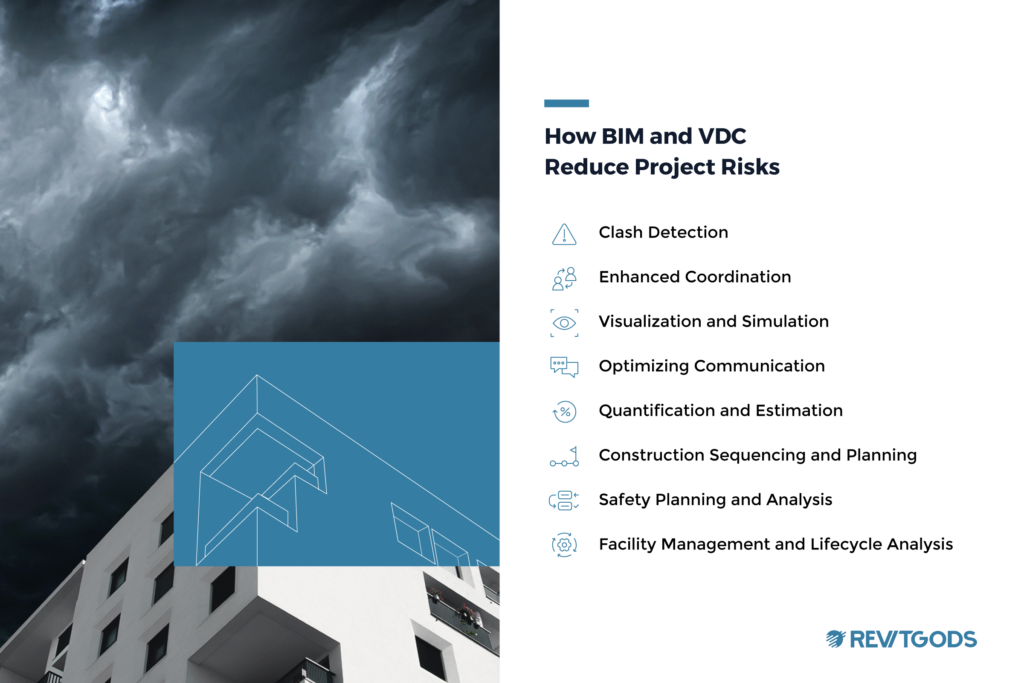Key Takeaways
Atlanta, Miami, and Minneapolis are the cities with the highest demand for AEC professionals.
St. Louis, MO; San Antonio, TX; and San Jose, CA, metro areas have authorized the most building permits per 100,000 residents.
Architect-related Google searches increased by 111% over the past year.
Architects earn the highest wages in California, Nevada, and New Jersey.
Nearly 1 in 3 AEC professionals believe their job is at risk because of AI.
Building a Bright Future
The construction industry is a fast-moving sector of the U.S. economy with plenty of growth opportunities. Architecture, engineering, and construction (AEC) professionals are eager to take advantage of these opportunities but may not know exactly where to look. Where is the construction industry booming the most? How are technological innovations like AI impacting the industry?
For this article, we used Google Trends search data from 2022 to 2023 to analyze interest for professionals in the construction industry across all 50 states. We also used data from the U.S. Bureau of Labor Statistics to explore AEC professionals’ pay across the U.S. and the Building Permits Survey from the U.S. Census Bureau to identify opportunities for professionals in the construction industry.
Finally, we surveyed 729 AEC professionals on topics ranging from work-life balance to the industry’s future. Let’s see what our deep dive discovered.
Demand for AEC Professionals
To start our industry review, we first looked at online search volume to determine demand for AEC professionals in each state and in the 50 most populous U.S. cities.
Based on search trends, demand for AEC professionals was highest in populous states such as California and Texas; each state had nearly 5,000 searches per 100,000 residents. Among cities, the thriving metro areas of Atlanta, Miami, and Minneapolis were the most interested in finding AEC professionals.
In the next part of our study, we took a broader view in order to identify the cities that authorized the most building and zoning permits for construction projects within the past year. These findings offer a bigger picture of construction in American metro areas as they aren’t limited to the 50 most populated. This list likely indicates where building booms—and rising demand for AEC professionals—could happen next.
looking at building and zoning permits, St. Louis, MO, San Antonio, TX, and San Jose, CA, metro areas authorized the most permits per 100,000 residents from January through April 2023. With the most permit authorizations, St. Louis is bursting with construction projects, with 1,690 authorized projects per 100,000 residents. The Midwest city has more than $2 billion in future infrastructure spending on the books.
Similarly, San Antonio is experiencing a construction boom, with 1,357 projects per 100,000 residents. The five-year forecast for downtown San Antonio shows construction projects worth nearly $3 billion on the way.
AEC professionals hoping to participate in exciting new projects may want to pack their bags and toolboxes for one of these thriving construction markets.
Sector-Specific Insights
Building design takes a team of professionals, including architects and a team of engineers. We set out to learn where online search activity is highest for these critical players and where they earn the highest pay.
Although the architecture industry faced challenges during the 2008-2012 recession, it has made significant strides toward recovery. The profession has mostly recovered from the effects of the recession. To that end, our study revealed that architect-related Google search volume spiked 111% over the past year, with Georgia having the most searches per 100,000 residents.
Georgia’s surge in the demand for architects can be attributed, in part, to its status as one of the most rapidly-growing states in the country. According to Metro Atlanta CEO, Georgia’s thriving business environment, low cost of living, diverse population, and strong focus on education and workforce development have contributed to its impressive economic expansion. These elements collectively make Georgia an attractive destination for individuals and businesses, driving demand for more housing and office spaces, which in turn drives demand for architects.
With this increased demand for their expertise, architects in Georgia earned an average of $90,000 annually. The highest-paying state was California, with an average annual wage of $112,000, but the cost of living is 55% higher than in Georgia.
Despite a growing demand for architects, the number of licensed architects declined by about 1% in the past year, according to the National Council of Architectural Registration Boards (NCARB). NCARB attributed this to the enduring effects of the pandemic, when there was a big dip in licenses as the country ground to a halt. The good news is NCARB reported a 9% increase in candidates working toward licensure in 2022, suggesting that the profession should grow soon.
The increase in licensure candidates is coming at the perfect time, as the U.S. Bureau of Labor Statistics (BLS) predicts a 3% employment growth for architects between 2021 to 2031. This is slower than the average growth for all occupations, but it’s still a demand thousands of architects will need to meet.
The BLS attributes this slower projected industry growth to building information modeling (BIM) software and measuring technology. The adoption of BIM allows architects to handle more complex projects and deliver higher-quality designs while also improving productivity and reducing workloads. This decreases the need for larger architect teams and allows architects to work on more projects each year, thereby contributing to slower employment growth rates.
California came out on top as the best state for engineering professionals. It was where they were most in demand and where engineer managers earned the highest annual wages—$194,000. Of course, the high wages in California are relative, as it’s one of the most expensive states in which to live. Competitive construction markets keep wages high, but better pay is needed to keep pace with the cost of living.
Among the cities we studied, Georgia’s capital city of Atlanta swept both categories as it had the largest search volume for architects and engineers. Atlanta’s construction industry is thriving, with dozens of major projects planned in the downtown area.
Architects interested in working in locations other than where they’re currently licensed need a reciprocal license. Data from the annual Survey of Architectural Registration Boards indicates some architects are already crossing state boundaries for work, whether physically or remotely. Their report noted that the number of architects with out-of-state licenses increased by 6% from 2021 to 2022.
Taking the Construction Pulse
With a better understanding of demand and pay within the construction industry, we surveyed AEC professionals about work-life balance, pay levels, and more. Let’s see what they had to say.
Despite a severe labor shortage and inflation-motivated wage hikes in construction, nearly 50% of AEC professionals felt unfairly compensated. Furthermore, 56% of respondents worked a side hustle to supplement their income. Even with these setbacks, most AEC professionals were satisfied with their current work-life balance, with an overall satisfaction rate of 63%.
Over three-quarters of architecture professionals (77%) were satisfied (the most among the three groups) with their current work-life balance, but pay was still a pain point for many. More than 2 in 5 architects felt unfairly compensated for their time and efforts at work, and almost half (47%) had a side hustle to make ends meet. Concerns about low pay and heavy workload are just two reasons why there’s been more job movement than usual in the architecture industry in the last few years.
Despite the Great Resignation wreaking havoc in many sectors, major industry players attribute the current shortage of architects to other deep flaws in architecture. Instead of seeing architects quit the profession altogether, they’ve witnessed them shifting to other firms or locations. And not only are architecture firms still feeling the effects of the pandemic, but they’re also continuing to deal with the fallout of the economic crash of 2008 and the ongoing volatility of the construction industry.
Discrimination and a lack of diversity are two other ongoing issues some architects and firms are facing. According to a recent survey by NCARB, over 1 in 4 architects have faced or witnessed discrimination in the workplace, most likely related to race, age, and gender.
Women were more likely than men to report facing or witnessing discrimination, and sadly, African American women were the most likely of all respondents to deal with these issues (47%). Black women were also 10% less likely to feel paid the same as their peers. These problems and more were most common in large firms, which is likely why some black female architects have left corporate America to start their own companies or for smaller firms that better foster diversity and equality.
From Human Touch to Technological Leap
The advent of artificial intelligence has roiled a variety of industries, with concerns ranging from job losses due to AI automation to the quality of AI-provided data. We asked AEC professionals how this new technology might affect the industry’s future.
Like in many industries, there’s an ongoing debate about the role of AI in architecture, engineering, and construction. Some architects and companies have already embraced AI tools and see AI as a way to solve employee shortages. However, others remain skeptical about this new technology and worry about its impact on jobs.
The AEC professionals we surveyed had a generally optimistic view of AI’s impact on the industry. In fact, 35% viewed its five-year impact on unemployment positively, versus just 16% who said it would have a negative effect. Surprisingly, less than one-third felt their jobs were at risk due to AI technology.
The majority (56%) of AEC professionals said AI would change employment by improving efficiency in the pre-design phase. Another 46% believed it would take over energy use, water consumption, and waste management data analysis. Most experts believe the AEC industry is poised to benefit greatly from AI as AI-powered technology can help reduce risk, increase productivity, and improve building efficiency.
Constructing a Visionary Future
Methodology
For this campaign, we used Google Trends data from 2022 to 2023 to analyze search volume interest for AEC professionals in the construction industry across all 50 states and in the 50 most populated cities in the U.S.
We also used data from the U.S. Bureau of Labor Statistics to explore construction worker pay across the U.S. and used the Building Permits Survey from the U.S. Census Bureau to identify opportunities for professionals in the construction industry. We also surveyed 729 professionals in the construction industry. Among them, 40% were construction workers, 48% were engineers, and 12% were architects.









